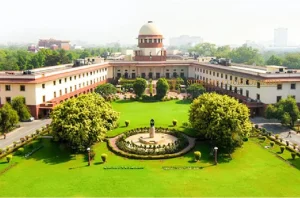

The Curious Case of ‘Case Management’
- /
- Articles and Blogposts /
- The Curious Case of ‘Case Management’
Its time for judge led litigation system to be actively seriously considered as a means of tackling increasing pendency.
Recently there were reports of the announcement of a joint conference of the chief ministers and the chief justices of the various High Courts called by the Chief Justice of India. That the conference is being held within one year of the previous conference as against the usual practice of two years is a good indication of the importance of the topic.
Concerns about the functioning of our judicial process have been simmering for quite some time. There have been innumerable studies by the Law Commission and academics highlighting the failure of the judicial process as currently followed in practice. The travails of our adjournment ridden litigants led court process is now widely documented – in research papers, media reports and art forms.
One of the radical measures that was being considered a few years back was the idea of ‘court led litigation’ or a ‘judge led case management’. The 245th Law Commission Report, ‘Arrears and Backlog: Creating Additional Judicial (Wo)manpower’ released in July 2014 refers (in foot note 14 on page 8) to a consultation paper on case management which can be accessed here.
What is judge led case management? In essence it means that:
- As soon as a case is filed the judge will decide on the nature and level of complexity of the case. This can be changed later on by the judge.
- Before commencement of proceedings, the judge, registry and the parties will agree on a schedule for filing of evidence.
- Judge shall have complete visibility on the stage-wise progress of each case. Information Technology tools to be used for this purpose.
- After completion of admission of the petition and denial of documents the judge may refer the case to ADR mechanisms
- If ADR mechanisms fail then evidence to be recorded before a commissioner
- Cases to be called for hearing on completion of evidence being recorded. The number of adjournments to be granted would be restricted as per law
A court led litigation process has now been in place in US, UK and Australia (with local variations) for more than a decade – and all indications are that it has been a resounding success.
This may prompt the detractors of such a system to say, “What works in those developed Westernised countries will not work for us, because:
- The social profile of litigants require the system to be lenient with timelines for justice to be truly served
- Very often it is the state that seeks adjournments due to lack of manpower and other capacity
- A shortage of judges means that adjournments are a necessity for both sides, more often than not”
For a moment let us give some thought to what are the enablers for a judge-led litigation process to be effectively implemented:
- An in-depth study of the type of litigants and reasons for adjournment seeking so as to identify cases for which such a system would not be suitable
- More judges to be appointed so as to allow them to dedicate more time for each case
- Additional support staff to be appointed for court management
- Investment in Information Technology tools and infrastructure
None of the above is beyond our means. Perhaps it is the means of making an informed decision that is slowly becoming beyond us.
The recently enacted Commercial Courts Act has introduced the judge led litigation process. What should we infer from this? That high stakes commercial disputes between more or less equally well stocked litigants are more important to be dispensed justice promptly? Lets hope not. Lets hope this is only the first of the many nature of disputes in which a court led litigation process would be introduced.
[ReviewDisclaimer]

Surya Prakash
RECENT ARTICLES


Lessons for Judiciary from Space Sector

The missing piece in India’s reform story—a strong tribunal system

Fast-track courts may not be the cure

-
Rule of Law ProjectRule of Law Project
-
Access to Justice SurveyAccess to Justice Survey
-
BlogBlog
-
Contact UsContact Us
-
Statistics and ReportsStatistics and Reports
© 2021 DAKSH India. All rights reserved
Powered by Oy Media Solutions
Designed by GGWP Design